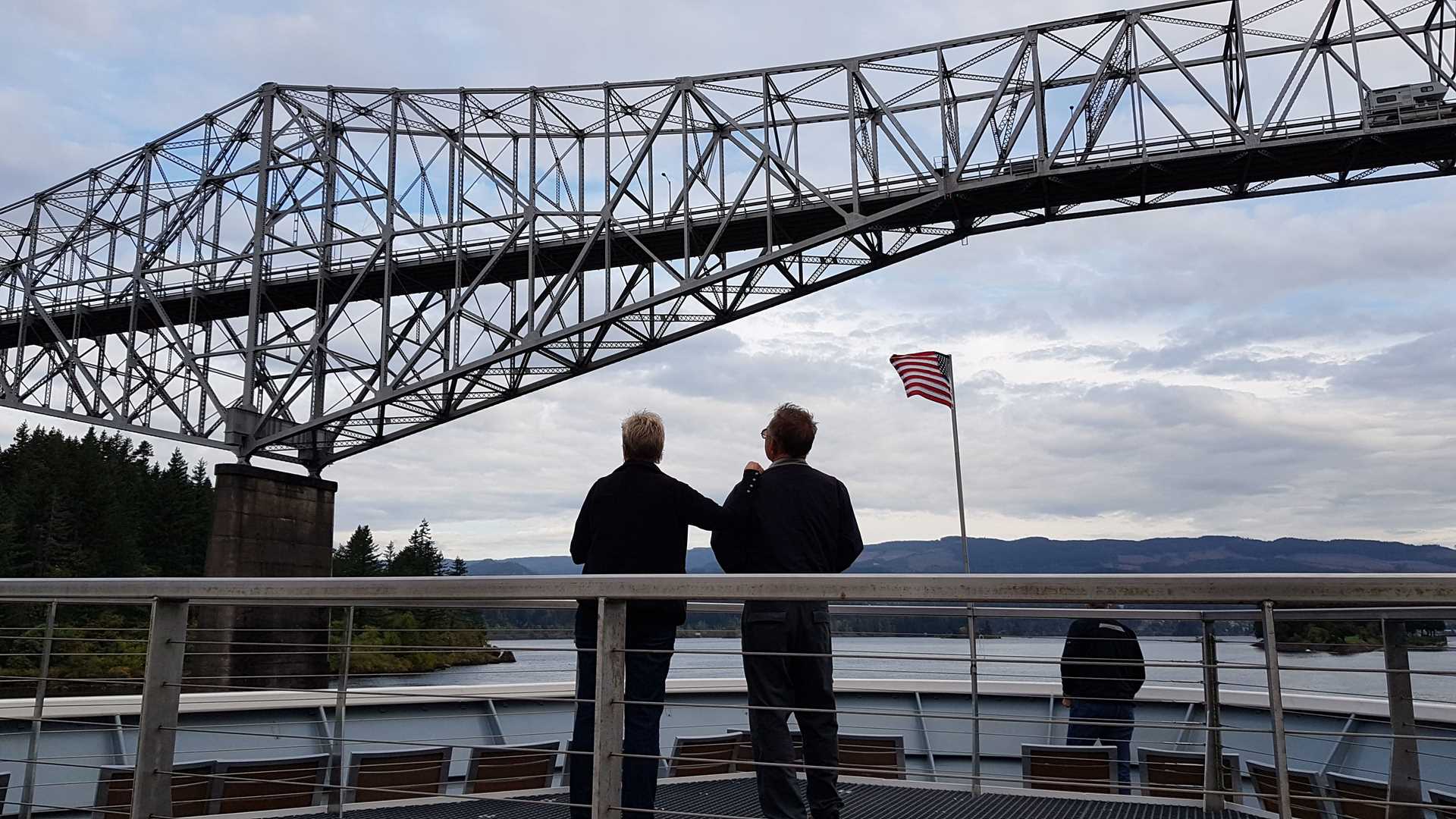Thousands of years ago, glacially-charged floods roared from the highlands of present-day Montana across the western plains towards the sea. The waters left hill-like ripples and tore potholes the size of caverns into the landscape. As they entered the Columbia River Gorge, they cut through a mile-thick layer of basalt from prior volcanic eruptions, leaving towering black cliffs along the shoreline. Over time, tributary rivers found their way back towards the lip of the cliffs, then tumbled over in new waterfalls to meet the Columbia on its way to the Pacific Ocean.
Fast-forward to the present day. At dawn this morning, National Geographic Quest navigated past the dark cliffs and pulled sleepily alongside the grandest of these waterfalls: Multnomah, a 620-foot cascade streaming silver into the green waters of the Columbia. Guests and cameras alike were up and ready on the bow, expectantly eyeing the gray clouds. While the sky didn’t break into
As if to mark the occasion, National Geographic Quest entered the first of eight lochs she would pass on this voyage at Bonneville Dam. The engineering marvel of entering a loch was a new experience for this chronicler! For the second time that morning, the bow was filled with onlookers and cameras as National Geographic Quest was lifted on an artificially rising tide to the next tier of the Columbia River.
Our afternoon’s excursions were a further reminder of the changing climate. After anchoring near the Hood River Bridge, we traveled up the Hood River Valley to visit the Draper Girls Country Farm, a third-generation family farm renowned for its “U-pick” apples, peaches, pears, and cherries. The Draper family members were ready to welcome us with samples of fresh apples and pears as well as their famous ciders. We spent an hour wandering the farm – and meeting the friendly resident pygmy goats – in view of nearby Mount Hood.
We split into groups and ended the afternoon with tours of the Western Antique Aeroplane and Automobile Museum (WAAAM – say it with gusto!) or various hikes along the Mosier Twin Tunnels trail. This chronicler joined the latter, arriving at the trailhead to birdsong and incredible basalt formations. As we wandered up the trail, the Columbia River snaked along before us and the golden grass of Washington’s hillsides gleamed from the opposite bank. Fall reminded us of its presence through the yellowing big-leaf maple trees and slanting evening light, slowly inching forward along the clock every day.
Some of the Hood River Valley’s famous windsurfers and paragliders joined us on the choppy waters as we took Zodiacs back to the ship that evening. We watched the blue and red sails illuminated by the sunset, cutting and soaring through the air like autumn birds.









